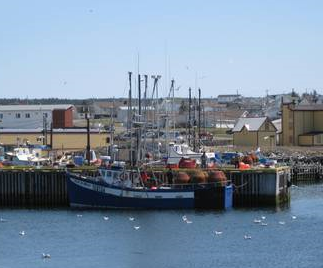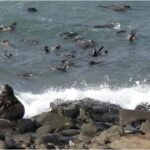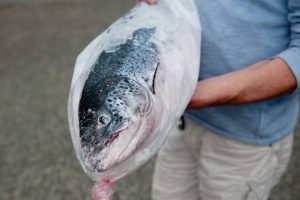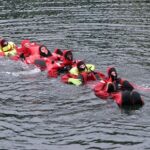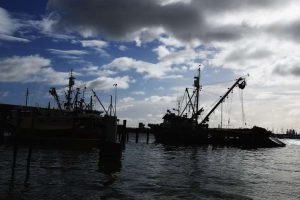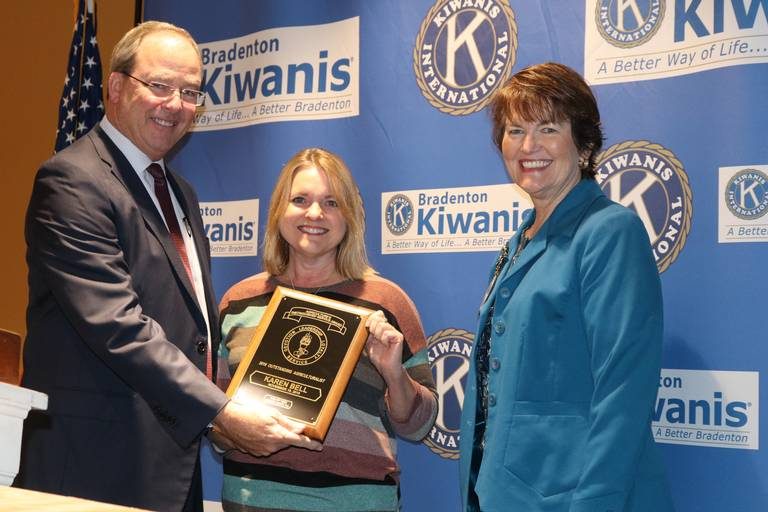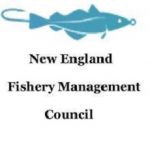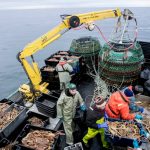Tag Archives: processors
Ready to fish: Harvesters, plant workers and processors await panel decision on NL snow crab pricing
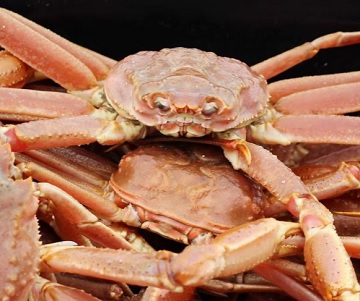 Crab harvesters in most areas of Newfoundland and Labrador were able to start heading to their respective fishing grounds as of Monday, April 7, even though the price they’ll be getting for their catches has yet to be settled. The federal Department of Fisheries and Oceans announced the 2025 snow crab season will open on Thursday, April 10 in parts of fishing zones 3LNO, 3Ps, 3K and 4R3Pn, which collectively take in the waters off the coast of the island of Newfoundland. Harvesters in some areas within those zones could begin heading to the fishing grounds on Monday, though no pots could be set and no crab possessed until 6 a.m. Thursday. more, >>CLICK TO READ<<07:43
Crab harvesters in most areas of Newfoundland and Labrador were able to start heading to their respective fishing grounds as of Monday, April 7, even though the price they’ll be getting for their catches has yet to be settled. The federal Department of Fisheries and Oceans announced the 2025 snow crab season will open on Thursday, April 10 in parts of fishing zones 3LNO, 3Ps, 3K and 4R3Pn, which collectively take in the waters off the coast of the island of Newfoundland. Harvesters in some areas within those zones could begin heading to the fishing grounds on Monday, though no pots could be set and no crab possessed until 6 a.m. Thursday. more, >>CLICK TO READ<<07:43
Restaurant Testing Exposes Rampant Shrimp Mislabeling in Savannah
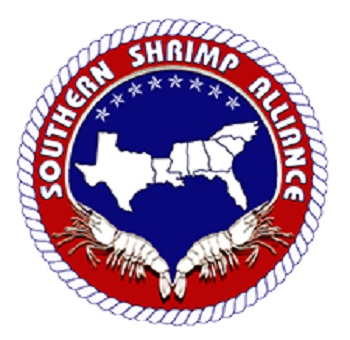 A recent investigation by SEAD Consulting reveals that 77% (34 of 44) of sampled restaurants in Savannah, Georgia falsely market their shrimp as premium U.S. wild-caught shrimp when they are actually serving farm-raised imported shrimp. The Southern Shrimp Alliance (SSA), representing the U.S. shrimp fishermen, processors, and related businesses across all eight Gulf and South Atlantic shrimp-producing states, including Georgia, commissioned the testing to highlight deceptive restaurant practices that harm local shrimpers, honest restaurants, and mislead consumers who expect a premium product. In 2024, SSA worked with the Federal Trade Commission (FTC) to inform seafood restaurants that it is a violation of federal law for restaurants to create an impression that they are offering wild-caught domestic shrimp when farmed, foreign shrimp is being served. Yet, the results of random testing underscore the urgent need for stronger labeling laws and enforcement to ensure transparency in the restaurant industry. links, more, >>CLICK TO READ<< 16:14
A recent investigation by SEAD Consulting reveals that 77% (34 of 44) of sampled restaurants in Savannah, Georgia falsely market their shrimp as premium U.S. wild-caught shrimp when they are actually serving farm-raised imported shrimp. The Southern Shrimp Alliance (SSA), representing the U.S. shrimp fishermen, processors, and related businesses across all eight Gulf and South Atlantic shrimp-producing states, including Georgia, commissioned the testing to highlight deceptive restaurant practices that harm local shrimpers, honest restaurants, and mislead consumers who expect a premium product. In 2024, SSA worked with the Federal Trade Commission (FTC) to inform seafood restaurants that it is a violation of federal law for restaurants to create an impression that they are offering wild-caught domestic shrimp when farmed, foreign shrimp is being served. Yet, the results of random testing underscore the urgent need for stronger labeling laws and enforcement to ensure transparency in the restaurant industry. links, more, >>CLICK TO READ<< 16:14
“We’re not getting the full value out of it”: The future of local seafood in Louisiana
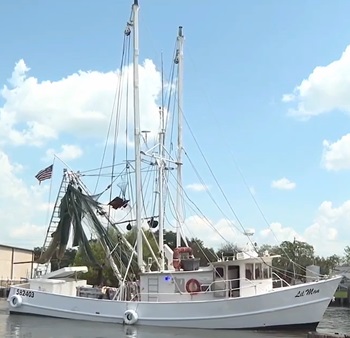 “Industries change over time, like anywhere you are, and so we’re just adapting to the new realities of the seafood supply chain.” LSU’s Seafood Processing Demonstration Lab is a hub for research and innovation. “Our main focus is in underutilized species and byproduct recovery,” said. As the only facility of its kind in-state, this Louisiana Sea Grant-sponsored program works with local processors, restaurateurs, and fishermen, to build local connections. “Louisiana is the #2 seafood state in the nation,” said co-director Thomas Hymel, “but a lot of our product is uh–we’re not getting the full value out of it.” Video, more, >>CLICK TO READ<< 10:10
“Industries change over time, like anywhere you are, and so we’re just adapting to the new realities of the seafood supply chain.” LSU’s Seafood Processing Demonstration Lab is a hub for research and innovation. “Our main focus is in underutilized species and byproduct recovery,” said. As the only facility of its kind in-state, this Louisiana Sea Grant-sponsored program works with local processors, restaurateurs, and fishermen, to build local connections. “Louisiana is the #2 seafood state in the nation,” said co-director Thomas Hymel, “but a lot of our product is uh–we’re not getting the full value out of it.” Video, more, >>CLICK TO READ<< 10:10
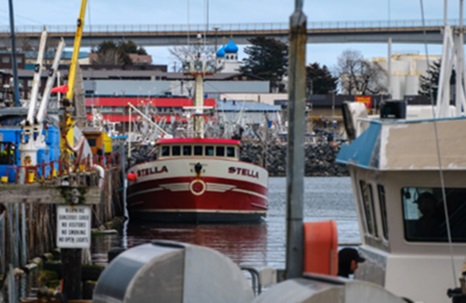
The seafood industry is in trouble. Processors and policy makers blame Russia.
Alaska waters produce the most seafood in the country, and many of the state’s coastal communities depend on commercial fisheries to sustain their economy. But Alaska’s fisheries are facing a massive economic slump right now and policymakers are increasingly blaming flooded global markets. The private sector and federal policymakers are teaming up to try to stop the bleeding. Last year was brutal on the seafood industry. Processing companies and fishermen alike suffered amid cratering prices, and they blamed Russia for flooding markets. Republican U.S. Sen. Dan Sullivan, from Alaska, pointed his finger at the country at a news conference on May 23. “Russians have essentially admitted they’re not just at war in Ukraine, they’re at war with the American fishing industry,” he said. more, >>CLICK TO READ<< 16:03
A business in crisis
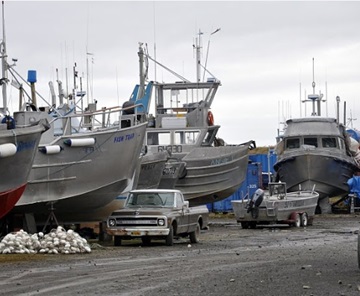 After years of choking on record runs of Bristol Bay sockeye salmon and near-record runs of heavily farmed, low-value pink salmon, the Alaska fishing industry is in chaos with processors now pleading for more government subsidies and coddled commercial fishermen demanding yet more disaster aid. One could blame global warming, which has led to historically unprecedented harvests of Alaska salmon despite whatever nonsense to the contrary the mainstream media might have reported, but the industry’s problems are far more complex than just trying to sell high-priced seafood in Western markets where the sales of animal protein are dominated by chicken, beef and pork. Some of the industry’s issues here are rooted in its long history. For most of the years after commercial fishing began in Alaska in the late 1800s, the business dealt almost wholly in canned salmon. >>click to read<< 08:41
After years of choking on record runs of Bristol Bay sockeye salmon and near-record runs of heavily farmed, low-value pink salmon, the Alaska fishing industry is in chaos with processors now pleading for more government subsidies and coddled commercial fishermen demanding yet more disaster aid. One could blame global warming, which has led to historically unprecedented harvests of Alaska salmon despite whatever nonsense to the contrary the mainstream media might have reported, but the industry’s problems are far more complex than just trying to sell high-priced seafood in Western markets where the sales of animal protein are dominated by chicken, beef and pork. Some of the industry’s issues here are rooted in its long history. For most of the years after commercial fishing began in Alaska in the late 1800s, the business dealt almost wholly in canned salmon. >>click to read<< 08:41
N.L. processors dumped 5 times as much crab in 2023 as they did last year
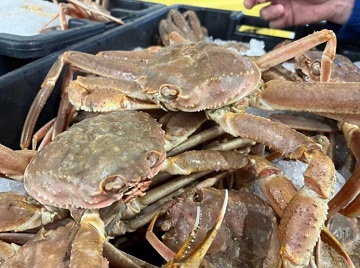 Newfoundland and Labrador fish processors dumped more than 300,000 pounds of snow crab during the past season — more than five times the amount dumped last year — according to data from the provincial Department of Fisheries, Forestry and Agriculture. In 2023, processors dumped 303,202 pounds of crab, compared with 59,239 in 2022 — a 411 per cent increase. Officials have not confirmed the reasons for the increased dumping, but harvesters blame a compressed season and unusually warmer waters. The 2023 snow crab season was marred with conflict from the outset: a six-week standoff over the $2.20-per-pound price that pushed the start of the season well into May, sending harvesters scrambling to catch what they could before cut-off and creating a bottleneck of boats on the water and product at plants. Photos, >>click to read<< 09:46
Newfoundland and Labrador fish processors dumped more than 300,000 pounds of snow crab during the past season — more than five times the amount dumped last year — according to data from the provincial Department of Fisheries, Forestry and Agriculture. In 2023, processors dumped 303,202 pounds of crab, compared with 59,239 in 2022 — a 411 per cent increase. Officials have not confirmed the reasons for the increased dumping, but harvesters blame a compressed season and unusually warmer waters. The 2023 snow crab season was marred with conflict from the outset: a six-week standoff over the $2.20-per-pound price that pushed the start of the season well into May, sending harvesters scrambling to catch what they could before cut-off and creating a bottleneck of boats on the water and product at plants. Photos, >>click to read<< 09:46
Maine State Chamber of Commerce puts spotlight on lobster
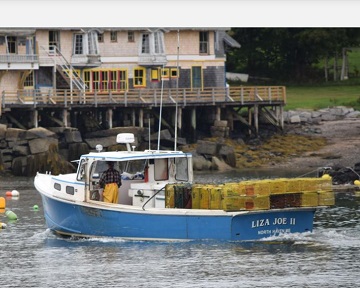 Maine lobster contributes $1.4 billion to the state economy and 4,000 jobs on the shore, from live lobster dealers to processors to workers on the piers. And those numbers don’t include lobster-based tourism, Linda Caprara, interim CEO of the Maine State Chamber of Commerce, noted Sept. 28 in an online panel discussion in honor of Maine Lobster Week. Then, there are the 5,000 licensed lobstermen and their crew who all earn their livelihood on the water. Last year, just below 100 million pounds of lobster landed on docks from Portland to Lubec with a value of about $390 million. “We’re catching a lot of lobster,” said Marianne LaCroix, executive director of the Maine Lobster Marketing Collaborative. >>click to read<< 08:51
Maine lobster contributes $1.4 billion to the state economy and 4,000 jobs on the shore, from live lobster dealers to processors to workers on the piers. And those numbers don’t include lobster-based tourism, Linda Caprara, interim CEO of the Maine State Chamber of Commerce, noted Sept. 28 in an online panel discussion in honor of Maine Lobster Week. Then, there are the 5,000 licensed lobstermen and their crew who all earn their livelihood on the water. Last year, just below 100 million pounds of lobster landed on docks from Portland to Lubec with a value of about $390 million. “We’re catching a lot of lobster,” said Marianne LaCroix, executive director of the Maine Lobster Marketing Collaborative. >>click to read<< 08:51

The Maine Lobster Industry Debuts First-Ever “Celebrate the Maine Lobster Roll,” an Impactful Twist on This Iconic Summer Dish
Lobster lovers, listen up. This summer, the Maine Lobster Marketing Collaborative (MLMC) is partnering with local restaurants and nationwide distributors to debut a new special: the “Celebrate the Maine Lobster Roll.” The “Maine Characters” campaign will spotlight the broad impact the fishery has on the state of Maine and will feature the stories of the individuals behind the industry – from the fishermen to the processors, dealers, trap builders, restaurants owners and more. The “Celebrate the Maine Lobster Roll” will give diners a taste of the impact with custom materials including toothpicks, placemats, sandwich paper and postcards that feature these individuals, along with a QR code to the “Maine Characters” digital hub to learn more. The best part? Every roll sold will help support the fishery. >click to read< 08:29
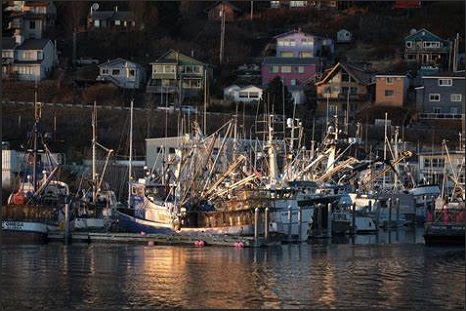
Victory! After a 2 week stand down, Kodiak’s Tanner crab strike is over
Each of Kodiak’s four canneries offered slightly different deals – Alaska Pacific Seafoods agreed to $3.35 per pound plus a retro payment – which can boost the final payout to fishermen after the season. Pacific Seafood also agreed to $3.35 per pound with a possible retro to fishermen. OBI settled with crabbers for $3.25 plus profit sharing, and Trident Seafoods stayed at $3.25 per pound. It wasn’t exactly the deal Kodiak crabbers were hoping for, and some boats from Kodiak may still take their crab out west where processors are offering slightly more per pound. But ultimately, 80% of those in attendance at Saturday’s meeting agreed, it was time to go fishing. “We stuck together, we’re gonna roll this thing out together, and we’re looking at it as a victory,” >click to read< 13:11

“We’re solid. We’re unified” – Inside Kodiak’s crab standoff
The nearly 6-million-pound quota was the highest in decades. And some people spent more than $100,000 to buy a permit to fish this year, said Kevin Abena, one of the leaders of the Kodiak Crab Alliance Cooperative. But fishermen’s hopes for a banner season are now in limbo, as the 130 boats in the Kodiak tanner crab fleet are on strike, holding out for higher prices from the seafood processors that typically buy, package and resell their catch. But processors and industry experts say the fishermen are fighting larger market forces that make it unlikely they’ll get much more than the $3.25 a pound that Kodiak-based plants have already offered, less than half than last year’s $8 a pound price. >click to read< 10:48
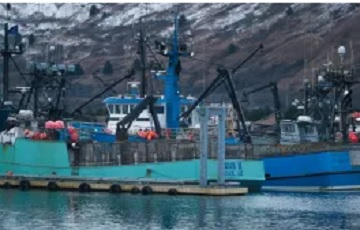
It’s been more than a week, and Kodiak’s Tanner crab stand down continues
Crabbers in Kodiak still haven’t come to an agreement with the island’s canneries on prices for this year’s harvest. And this weekend, the fleet voted again to continue standing down – with no plans to meet again until they get a better offer from processors. Kodiak’s fleet voted down an offer from local processors for $3.25 per pound for Tanners on Friday. Canneries had initially offered $2.50 per pound ahead of the season. And Sunday night, crabbers voted to press pause on the season altogether until they get a price from canneries they think is fair. “We all thought we were going to be fishing, but we all understand why we aren’t fishing,” said Kevin Abena the secretary and treasurer for the Kodiak Crab Alliance Cooperative, which represents permit holders in the fishery. “So, we’re just waiting.”>click to read< 10:59
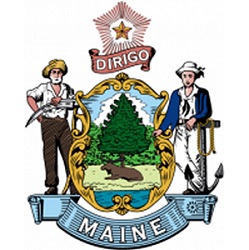
Governor Mills Announces Cost Relief for Maine’s Commercial Fishermen and Aquaculturists
The Maine Department of Marine Resources (DMR) will use $8.3 million in Federal funding to reimburse resident commercial fishermen, dealers, processors, and aquaculturists for the cost of their 2022 licenses, as well as additional fees associated with licenses such as trap tag fees for lobster license holders. The Department will also waive lease fees for active commercial leases for the 2022 lease year through a separate process. The first round of payments, which amount to $4.2 million, will be mailed by the end of this month for license holders who purchased their license between November 15, 2021 and March 31, 2022. Reimbursements for licenses purchased during each of the remaining quarters of 2022 will be mailed separately. >click to read< 16:45
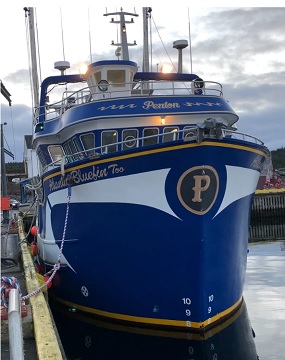
Fisherman who vowed to dump shrimp if no buyer stepped forward has found one,,, in Nova Scotia
The La Scie inshore fisherman who vowed to dump his first load of northern shrimp for the season if he couldn’t sell the catch has found a buyer across the Gulf in Nova Scotia. “Thank God we don’t have to dump it,” says Ryan, who operates the fishing enterprise, F/V Atlantic Blue Too, with his son Josh, the skipper and license holder. “A Nova Scotia buyer has agreed to purchase the shrimp for significantly more than buyers are willing to pay here.” Most of the province’s shrimp fleets in the Gulf and off the east coast have yet to untie this season, despite the fact the spring price was set on April 24th, and the fishery opened on May 29th. >click to read< 08:04

Fisherman who vowed to dump shrimp if no buyer found suffers vessel breakdown, threat stands
The La Scie fisherman who vowed to dump his first load of northern shrimp for the season if there was no buyer returned to port today without any catch after his fishing boat suffered mechanical problems at sea. But Terry Ryan says he expects the Atlantic Bluefin Too will be repaired as early as Friday, and he plans to follow through with his pledge. “Full-steam ahead,” says Ryan, who operates the enterprise with his son, Josh, the skipper and licence-holder. Terry Ryan threatened to dump their first load of shrimp at an estimated loss of $100,000 if there’s no buyer when the catch landed as a protest of the province’s panel system of fish pricing. >click to read< 15:14

Shrimp fisherman prepared to dump 50,000-pound catch if processors not prepared to buy it
Terry Ryan of La Scie, who together with his son Josh operate the Atlantic Bluefin Too, vows the boat will start fishing shrimp on Saturday, and if there’s no buyer for the 50,000/lbs they expect to have aboard by late Sunday/early Monday when the vessel returns to port, the catch will be dumped as a means to shake up the fishery and get it going. The spring shrimp price was set at $1.42/lb on April 24th, and Fisheries and Oceans opened the fishery on Sunday, May 29th (after public complaints by Terry Ryan on VOCM Open Line/The Broadcast), but the inshore fleet has yet to untie because processors say the price is too high. Which leads back to the increasingly popular question: what’s the good of the government-appointed price-setting panel? >click to read< 07:46
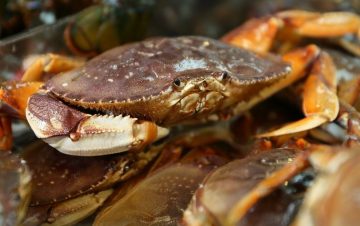
Off Washington state’s coast, Dungeness crabbers get early start to season, haul in bounty
Some 60 vessels in Washington’s oceangoing crab fleet worked through a stormy December to bring in more than 4.69 million pounds of Dungeness in a strong start to the annual harvest. The ocean harvest has unfolded in a stretch of coastal waters from Klipsan Beach south to the Columbia River. Fishers also have had to endure some tough, chilly weather during the final weeks of 2021. “We’re all from Alaska so it seems pretty normal to us,” said Daniel Crome, who was raised in Petersburg, Alaska, and fishes out of Westport with a five-person crew that as the catch rates dropped off, was cut to four. Back at the docks, these Dungeness have fetched $4.75 a pound or more. >click to read< 08:23
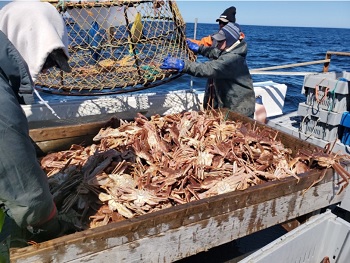
Good news for Newfoundland fishermen, plant workers, and processors in the snow crab fishery
The snow crab fishery should continue to be an economic bright spot for the Newfoundland and Labrador economy in 2021. The latest report from Fisheries and Oceans (DFO) science shows modest improvements in snow crab biomass in several fishing zones around the province. The good news from science is that the snow crab stocks appear to be recovering in some areas.,, Julia Pantin, DFO’s lead biologist for snow crab in the Newfoundland region, said the population of crabs becoming available to the fishery is expected to increase over the new two to four years in most areas. >click to read< 11:30
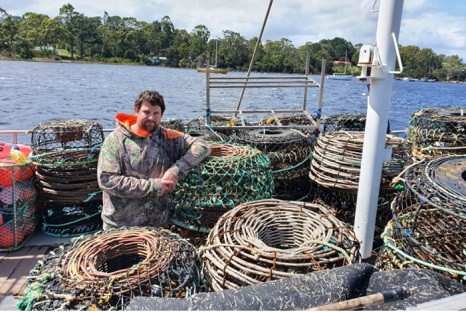
Australia: Cheap lobsters on Christmas tables as prices plummet due to China import ban
Commercial fishers operating in Victoria, Tasmania, and South Australia are supplying record volumes to the domestic market after China’s ban on Australian live lobster imports. With the crustaceans removed from restaurants and markets in China, (you know the drill),,,Tasmanian commercial fisher Jason Hart this week sold his catch directly to the public at the Strahan wharf. “I’ve never had to worry about selling them from the wharf before,” Mr Hart said. “Even when our markets have been bad you can still on-sell the fish. But I’ve never seen it like this,,, >click to read< 13:48
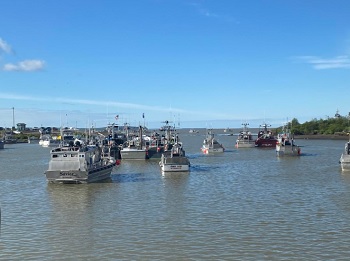
For Alaska’s seafood processors, the Coronavirus pandemic has cost tens of millions
Heading into the 2020 fishing season, many people were concerned that seafood workers from out of state would bring COVID-19 to rural communities. Processing companies managed to keep the disease under control. but at a big cost. Now, economists are looking at that financial toll. To keep track of how the pandemic is shaping the seafood industry, economists at the McDowell Group have started to publish monthly briefs for the Alaska Seafood Marketing Institute. “It’s interesting to describe a crisis when you’re in the crisis, right? And that’s our situation,” said Garrett Everidge, an economist at the McDowell Group. >click to read< 15:15

Maine: 1 in 3 Lobstermen got small Paycheck Protection Program loans
About $14.9 million in forgivable Paycheck Protection Program, or PPP, loans of less than $150,000 have been handed out to 1,358 Maine lobstermen, according to an analysis of newly released U.S. Small Business Administration data. That puts lobstermen ahead of full-service restaurants, real estate offices, beauty salons and home builders, which rounded out the top five Maine industries receiving small PPP loans. Maine’s $1.4 billion-a-year lobster industry – including those who buy, sell and process lobster as well as catch it – have received 1,495 forgivable PPP loans worth at least $24.2 million, so far. Fishermen got the lion’s share of the industry’s total PPP money, but only because they outnumber dealers, retailers and processors. Some dealers got loans of up to $1 million. >click to read< 07:15

An Alaska commercial fishing season unlike any other kicked off in Cordova on Thursday
Normally, the Copper River gillnet season, the first salmon fishery to open in the state, is known for high-priced fish and celebrity-level fanfare: One of the first fish to be caught is flown to Seattle via Alaska Airlines jet, and greeted with a red carpet photo opportunity. In this pandemic year, things are different all around: The Alaska Airlines first fish photo op will still happen, but the festivities have been tamped down and six-foot distancing and masks are now required. Instead of a cooking contest pitting Seattle chefs against each other, a salmon bake for workers at Swedish Hospital in Ballard is planned. And this year, Cordova’s first-in-the-state salmon fishery will be a high stakes test,,, >click here< 10:15

In America’s largest salmon fishery, preparations begin for coronavirus prevention ahead of the season
Around Bristol Bay, community leaders, health facilities and local entities are working to coordinate their preparations for the coronavirus. Thousands of fishermen, processors, and cannery workers will travel to Bristol Bay in the coming months to participate in the commercial fishery. As of Thursday afternoon, no one in the region had been tested for COVID-19, the disease caused by the coronavirus. Alaska’s first known case of the disease was announced Thursday afternoon. >click to read< 11:26
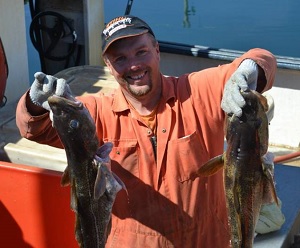
‘On pins and needles’ – NL fish harvesters, processors keeping an eye on China as coronavirus crisis continues
COVID-19, also commonly referred to as the coronavirus, is having a significant economic impact on China, a country whose importance continues to grow as a destination for seafood from this province. “Everybody’s on pins and needles,” Garnish-based harvester Alfred Fitzpatrick told SaltWire Network recently. The crab season along the province’s south coast usually opens up in early April, followed a couple weeks later by lobster. That’s not far off, and with talk in recent days of COVID-19 potentially becoming a pandemic, it looks as if the economic consequences will continue, as well. “Oh, my God, yes,” Fitzpatrick responded when asked if the COVID-19 crisis was inspiring conversation on the province’s wharves. “Like I said, everybody is worried. With the cost of everything going up and the new requirements and everything everybody got to do, I mean, it’s all money, and if you don’t make it, you can’t spend it, hey,” he said. >click to read< 17:40
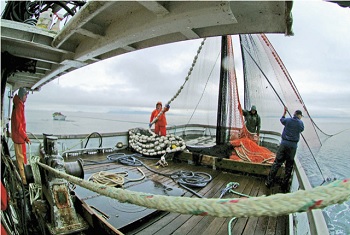
FISH FACTOR: First checks finally set for 2016 pink salmon disaster
It’s been a long time coming but payments should soon be in hand for Alaska fishermen, processors and coastal communities hurt by the 2016 pink salmon run failure, the worst in 40 years. Congress OK’d more than $56 million in federal relief in 2017, but the authorization to cut the money loose languished on NOAA desks in D.C. for more than two years. The payouts got delayed again last October,,, >click to read< 17:18
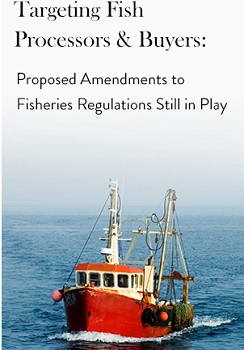
Proposed Fisheries Regulation Amendments Target Fish Processors & Buyers
The Fall 2019 re-election of the Liberal government means the proposed amendments to federal fisheries regulations remain a concern for industry participants.,, However, the government has, to date, not implemented the amendments. The proposed amendments target arrangements that transfer license rights and privileges from license holders to third parties. In the Statement, the Minister notes the perceived narrowness of the definition of “Controlling Agreement”,, McInnes Cooper has prepared this document for information only,, >click to read< 12:27
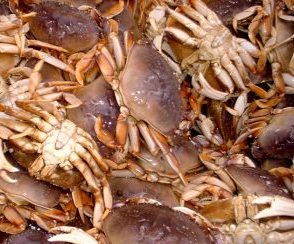
A bad season for crab – Domoic acid levels high again, meat content poor, crustaceans start to molt
The Oregon Department of Agriculture is ordering crab fishermen to eviscerate or destroy any crab caught since Feb. 13 after tests Wednesday showed domoic acid is again at unacceptable levels. There is also a recall on all live or whole-cooked crab caught since Feb. 13, said Troy Buell, fishery manager with Oregon Department of Fish and Wildlife. Recreational crabbing in Curry County has also been closed. The news comes nine days after the long-delayed crabbing season opened in the last section on the Oregon Coast. >click to read< 09:01
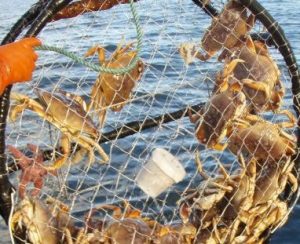
Crab season: ‘Fishermen just needed to go fishing’ while skinny crab adds stress
The opening of the commercial crab season is traditionally December 1, but this year it was delayed to ensure quality and to work out negotiations between fishermen and processors over price.
While crabbers in Newport agreed to a $2.75 starting price, we were told Friday the offer was not accepted by the majority of west coast fishermen. >click here to read< 16:54
Skinny crabs add stress on local business owners – Scattered crabbing vessels dotted the horizon from Klipsan Beach and along the southwestern Washington coast last Monday. It was the start of the new commercial crabbing season — and possibly, sellers hope, the rebounding of the local market. Pacific Northwest crabbers have already lost over one and a half months’ worth of the crab season. >click here to read<
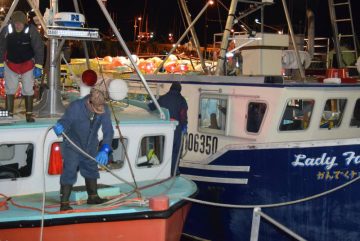
Editorial: Fisheries madness
The federal government seems hell-bent on proceeding with ill-advised amendments to the Fisheries Act that pose particular threat to Atlantic Canadian inshore fishermen and processors. The importance of the fishery cannot be overstated — directly responsible for 80,000 jobs and $6.6 billion in exports — while the indirect economic impact is much greater. Yet Ottawa is hinting at major changes — especially with licence allocation — that could turn the industry upside down. >click here to read< 10:49 
Alaska fisheries thrive — yet industry is on the edge
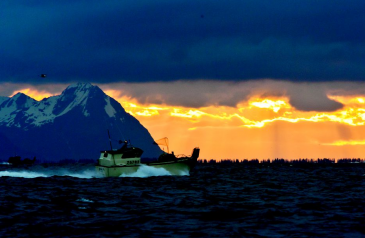 It has been a really good year across most of Alaska’s commercial fisheries. Salmon prices are up, harvests are good, fuel costs are down, and there’s more: The world’s appetite for nutritious, wild-caught Alaska fish, caught in clean waters, is growing. Alaskans’ track record for managing fisheries in a sustainable manner, both near-shore and further at sea, reinforces our reputation for responsible stewardship. Life is good.,,, Seafood employed 56,800 workers in 2015-2016 and this industry annually contributes $5.2 billion to the state’s economic output. But as good as this sounds, the fact is that this traditional industry is actually fragile,,, click here to read the story 21:45
It has been a really good year across most of Alaska’s commercial fisheries. Salmon prices are up, harvests are good, fuel costs are down, and there’s more: The world’s appetite for nutritious, wild-caught Alaska fish, caught in clean waters, is growing. Alaskans’ track record for managing fisheries in a sustainable manner, both near-shore and further at sea, reinforces our reputation for responsible stewardship. Life is good.,,, Seafood employed 56,800 workers in 2015-2016 and this industry annually contributes $5.2 billion to the state’s economic output. But as good as this sounds, the fact is that this traditional industry is actually fragile,,, click here to read the story 21:45






